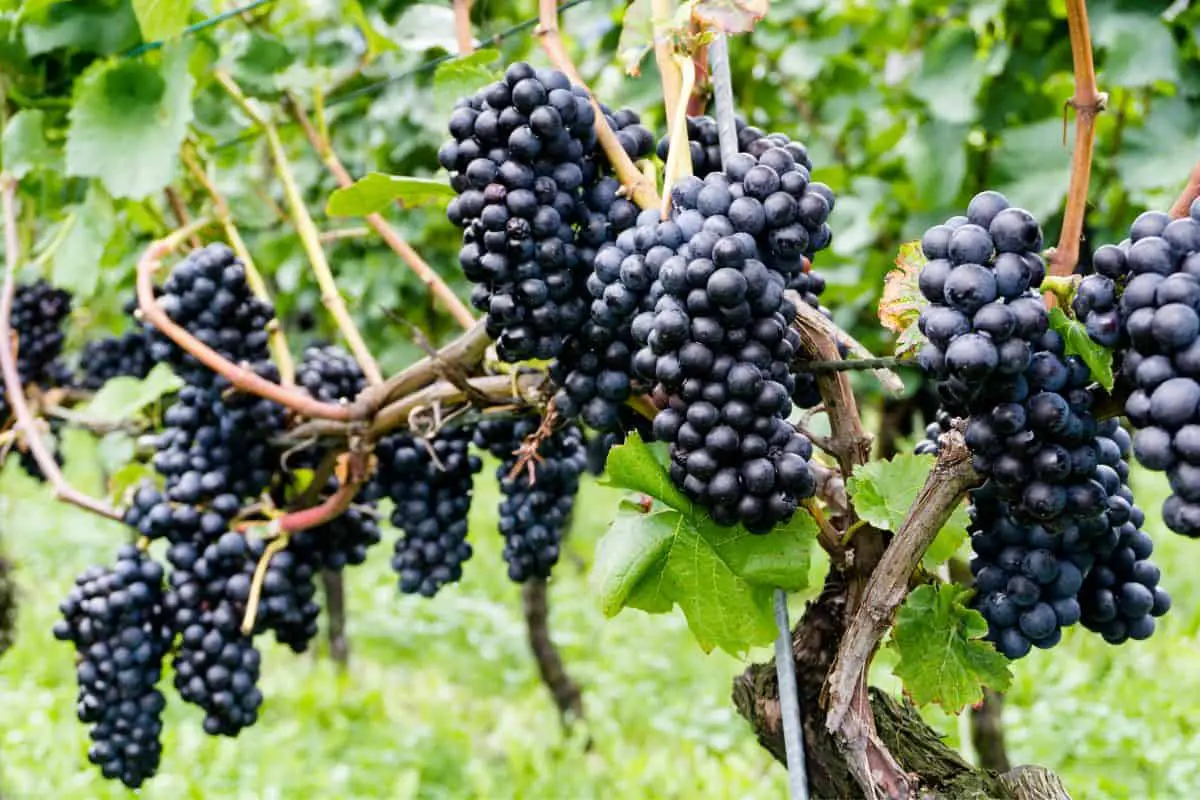On a hot summer day with a big plate of seafood, many of us will reach for a glass of Pinot Grigio.
Known for a clean taste with a zip of acid and a touch of minerality, the dry Pinot Grigio is a wine for many occasions.
But if you’re after something a little sweeter, you’re probably better off with a different grape.

However, you just might be surprised at the variety that can be created from this classic grape.
In warmer climates, Pinot Grigio grows fruitier, and if left on the vine long enough, can even take on a delicious sweetness.
Sweet Pinot Grigio is better known as Pinot Gris, but the two wines come from the same grape.
In this guide, we’ll introduce you to the most common types of Pinot Grigio, and where to look for the perfect bottle.
Is Pinot Grigio Sweet?
Pinot Grigio is a white wine known for having a fresh taste with little complication.
It’s typically a dry wine, with a light and zesty flavor profile and a hint of acidity.
Pinot Grigio is rarely sweet, and most associate the variety with a medium-dry finish. However, sweet Pinot Grigio wine is made, and is usually a fruitier expression.
One reason you’ll rarely find a sweet Pinot Grigio is that it’s more likely to be called Pinot Gris!
Pinot Grigio and Pinot Gris are both produced from the same type of grape, but the drier wines are categorized as ‘Grigio’, while sweeter varieties are known as ‘Gris’.
The main difference in flavor comes from how early in the season the grapes are harvested, but where the grapes are grown can make a difference.
French wines are more commonly referred to as Pinot Gris, and tend towards sweetness.
Italian varieties are better known as Pinot Grigio, and are typically dry. Both terms translate to gray Pinot.
Different Styles Of Pinot Grigio
There are two main factors separating the dry Pinot Grigio from the sweeter Pinot Gris. The first thing to consider is where the grape is grown.
The climate, overall temperature, and soil quality can all affect the final taste in your glass of Pinot Grigio.
The second key component is when the grape is harvested earlier, the Pinot Gris grape retains a sharper bite, and a zesty flavor.
Left on the vine for longer, and the grape grows fruitier and sweeter.
Mineral And Dry Pinot Grigio
For many, a dry and mineral Pinot Grigio is the classic choice.
It has a high acidity and notes of citrus, alongside an unusual saline quality that contributes to the clean taste.
A dry and mineral Pinot Grigio is lean, and the simplicity of flavor gives a bold elegance.
Minerally Pinot Grigio is the perfect complement to salty seafood enjoyed in the heat.
The simple flavors of Pinot Grigio go best with simple foods, a hot sun, and a relaxing evening.
The best mineral and dry Pinot Grigio wines come from the Alps. On the slopes and valleys of the Alps, the grapes remain lean and acidic.
Cooler climates are preferred. Trentino and Alto Adige in Italy grow exceptional Pinot Grigio.
Look to some unexpected wine producing countries for other choices: Austria, Germany, Slovenia, and Chile all have something to offer.
Fruity And Dry Pinot Grigio

As dry as the previous variety but replacing the lean mineral taste with a ripe flavor, the fruity and dry Pinot Grigio offers a richer texture.
Sometimes described as a Pinot Gris, these wines introduce flavors of apple and peach alongside an acidic lemon. It isn’t just the flavor that changes.
These fruity Pinot Grigio wines tend to have an oilier texture.
This is often the result of malolactic fermentation, which converts apple-tasting acids into smoother, butter flavors.
Just as delicious with seafood, the oily texture can hold up to heavier sauces.
Unlike the cool climates that favor the mineral Pinot Grigio, these wines are best grown in warmer regions.
California, Australia, and New Zealand all produce exceptional dry and fruity Pinot Grigio. South Africa and Argentina are also producers worth checking out.
Fruity And Sweet Pinot Grigio
The sweet and fruity varieties of Pinot Grigio have a rich taste, combining lemon and apple with honeycomb to create depth.
The sweetness is given sophistication by a strong body and an impressive texture, which makes this wine one best enjoyed on its own.
Like many sweet wines, it pairs well with dessert, but can struggle to complement a meal. Make the most of the flavor by savoring once you’ve finished eating.
The very best sweet Pinot Grigio, or Pinot Gris, comes from the Alsace region in France.
Inspired by the Tokaji wine of Hungary, Pinot Gris from Alsace is a wine for special occasions.
Look for a Grand Cru, which indicates the best vineyards in Alsace.
Other terms to know are Vendage Tardives, referring to sweet late harvest grapes, and Selection de Grains Nobles, which describes grapes with noble rot for improved texture.
Is Pinot Grigio Rosé Sweet?
Pinot Grigio can be used to create a rosé wine by leaving the skins in contact with the juice. This tints the wine a pale copper blush.
A Pinot Grigio rosé is typically fruity, with hints of cranberry and a floral touch.
It tends to be sweeter than the dry and fruity Pinot Grigio, but not as sweet as a Pinot Gris.
Serve chilled, and enjoy alongside spicy foods and simple desserts, or drink as a toast on a warm day.
Final Thoughts
Pinot Grigio is rarely a sweet wine. Most often dry or medium-dry, the climate the grapes were grown in have a great influence on taste.
In cold regions, Pinot Grigio has a clean and simple mineral taste.
Head to warmer vineyards, and Pinot Grigio takes on a fruitier flavor palette, although it remains dry.
But sweet Pinot Grigio does exist, and is most commonly made in Alsace in France.
Sweet Pinot Grigio is often called Pinot Gris, in honor of its primarily French heritage.
- How to Learn Wine Tasting: Essentials for Beginners - March 10, 2024
- How to Learn to Like Wine: Cultivating an Appreciation for the Vintner’s Art - March 10, 2024
- Thanksgiving Sangria: A Flavorful Twist to Your Holiday Table - August 27, 2023








